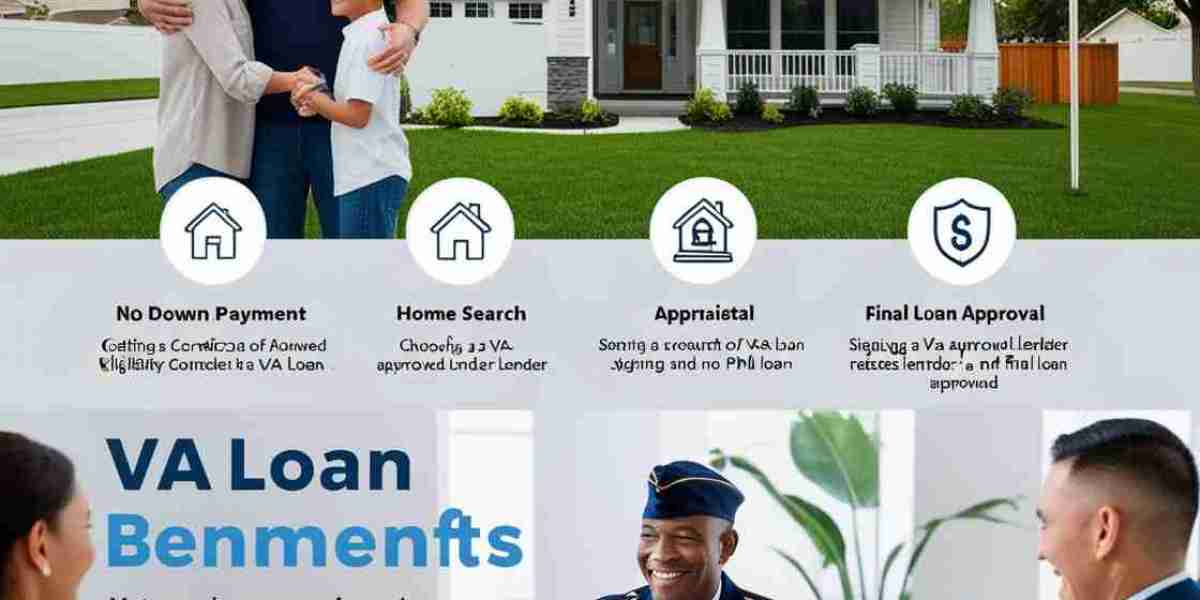For veterans and active-duty service members, the path to homeownership can often seem daunting due to financial constraints and strict lending requirements. However, the VA Loan Program provides a unique and invaluable opportunity, designed specifically to help those who have served our country secure affordable housing. Backed by the U.S. Department of Veterans Affairs, VA loans come with numerous benefits that can maximize financial advantages for eligible individuals. This comprehensive guide will explore the key features, benefits, and strategies for making the most of VA loans.
Understanding VA Loans
VA loans are mortgage loans guaranteed by the U.S. Department of Veterans Affairs, specifically aimed at veterans, active-duty military personnel, and certain surviving spouses. The government backing reduces the risk for lenders, allowing them to offer more favorable loan terms.
Key Features of VA Loans:
- No down payment required.
- No private mortgage insurance (PMI) necessary.
- Competitive interest rates.
- Flexible credit requirements.
- Limited closing costs.
- Assumable mortgages.
Top Benefits of VA Loans
1. No Down Payment
One of the standout features of VA loans is that they allow qualified borrowers to purchase a home with no down payment. This significant advantage means that veterans can finance 100% of the home's value without the burden of saving for a hefty upfront cost.
- Benefit: This accessibility allows veterans to enter the housing market sooner, making homeownership a more immediate reality.
2. Elimination of PMI
Unlike conventional loans that typically require private mortgage insurance (PMI) if the down payment is less than 20%, VA loans do not require PMI, regardless of the loan amount.
- Benefit: The absence of PMI results in lower monthly mortgage payments, enabling veterans to manage their finances more effectively.
3. Competitive Interest Rates
VA loans often come with lower interest rates than conventional loans. The government guarantee reduces lender risk, allowing them to extend favorable rates to veterans.
- Benefit: Lower interest rates result in substantial long-term savings on mortgage payments, enhancing the overall affordability of homeownership.
4. Flexible Credit Requirements
While traditional loans often have strict credit score requirements, VA loans are generally more lenient. Most lenders look for a credit score of at least 620, but there is no minimum set by the VA itself.
- Benefit: This flexibility makes homeownership attainable for veterans with diverse credit histories, including those who may have faced challenges in the past.
5. Limited Closing Costs
The VA limits the closing costs that lenders can charge, which helps keep these expenses manageable. Additionally, sellers are allowed to pay certain closing costs, providing additional financial relief for buyers.
- Benefit: Lower closing costs make it easier for veterans to transition into homeownership without overwhelming financial strain.
6. Assumable Mortgages
One of the unique features of VA loans is that they are assumable, meaning that if you decide to sell your home, the new buyer can take over your existing loan under its current terms.
- Benefit: This can increase the marketability of your home, particularly in rising interest rate environments, as buyers may prefer the lower-rate loan you currently hold.
Maximizing Your VA Loan Benefits
To fully capitalize on the advantages of VA loans, consider the following strategies:
1. Understand Your Eligibility
Before applying for a VA loan, it’s crucial to verify your eligibility. Service members must meet specific criteria regarding the duration and type of service. Obtaining your Certificate of Eligibility (COE) is the first step, as it confirms your eligibility for the program.
2. Choose the Right Lender
Selecting a lender experienced with VA loans is essential. Not all lenders offer VA loans, and those that do may have varying levels of experience and knowledge about the program.
- Tip: Shop around and compare lenders to find one that offers the best terms and customer service tailored to VA borrowers.
3. Prepare Your Financial Documents
To streamline the application process, gather the necessary financial documents early. This may include:
- Proof of income (pay stubs, W-2s, tax returns).
- Bank statements.
- Information about any outstanding debts or financial obligations.
4. Consider a VA Renovation Loan
If you're considering buying a home that needs repairs, look into the VA renovation loan option. This type of loan allows you to finance the cost of repairs into your mortgage.
- Benefit: This can be an excellent way to purchase a fixer-upper while securing funding for necessary improvements.
5. Utilize VA Resources
The VA offers numerous resources and support services for veterans and their families. Take advantage of these offerings, including counseling services and financial education programs.
6. Know the VA Funding Fee
While VA loans do not require PMI, they do have a funding fee, which is a one-time charge added to the loan amount. This fee can vary based on factors like your service type and whether it’s your first time using a VA loan.
- Tip: Some veterans, such as those with service-connected disabilities, may be exempt from this fee. Make sure to inquire about your eligibility.
How to Apply for a VA Loan
1. Verify Eligibility
Confirm your eligibility by reviewing your service record and obtaining a COE from the VA.
2. Find a VA-Approved Lender
Research and select a lender experienced in VA loans. Ensure they can guide you through the application process effectively.
3. Complete the Application
Submit your loan application, providing all necessary financial documents and information.
4. Undergo Appraisal and Underwriting
Once your application is submitted, the lender will order a VA appraisal to assess the property’s value and condition. Following this, your application will go through underwriting.
5. Close on Your Loan
If approved, finalize the loan at closing, where you'll sign the necessary documents and officially become a homeowner.
Conclusion
The VA Loan Program offers an exceptional opportunity for veterans and active-duty service members to achieve affordable homeownership. With benefits such as no down payment, no PMI, competitive interest rates, and flexible credit requirements, these loans are tailored to meet the unique needs of military families.
By understanding how to maximize the advantages of VA loans, veterans can pave the way to homeownership, ensuring a secure and stable future for themselves and their families. Whether you're a first-time homebuyer or looking to refinance an existing mortgage, the VA loan program can be your key to unlocking the door to your dream home.



